
Lived Lives Project
About
Official Statistics tell us that suicide is the biggest killer of young Irish men and women in Ireland, far exceeding road deaths. Hidden behind the statistics lie the personal, untold stories of the lived lives of loved ones who have died by suicide. When someone dies by suicide, the person becomes de-humanised and the lived life is reduced to a statistic.The deceased quickly becomes defined by the manner of their death, changing from person to object. The reality of their life and the memory of the person they were are eclipsed by the manner of their death. To challenge this, Lived Lives seeks to re-humanise the suicide-deceased by going behind the cold, clinical statistics and making the individual visible, through collaborative, truthful, sensitive, and safe representation of the lived life lost and the experience of those they left. This action restored identity to the deceased and foregrounded the lived life as opposed to the manner of their death.
Lived Lives is a durational social engaged art practice which emerges from an on going collaborative interdisciplinary research platform established in 2006 between artist Dr. Seamus McGuinness, GMIT Galway, Professor Kevin Malone, School of Medicine & Medical Science, UCD Dublin and many others. The process involved working closely with forty-two Irish suicide-bereaved families (107 individuals) from 22 counties around Ireland who donated stories, images and objects associated with the lived life of a loved one lost to suicide. The donated material became a working or ‘living’ archive. Many families chose to donate stories, clothing and controversially images and names, which revealed the identity of their deceased loved one, thus challenging the codes of confidentiality and anonymity as laid down by The Ethics and Medical Research Committee and to which Lived Lives had to adhere.
From these McGuinness created a series of art installations including, 21g, Archive Rooms and The Lost Portrait Gallery. Placing the families within the process, they became the first audience to see the emerging art works at Galway "09. Importantly at these engagements the families had the right to withdraw any of their donations from the exhibitions. With express permission given by the donating families, a mediated public exhibition was co-produced and co-curated with artist, scientist, families and communities, creating a series of site specific public conversations and interactive art installations nationally and internationally. These collective actions create new methods of production, new sites for difficult conversations and new ways to ethically and responsibly transpose these private experiences of human loss into the public domain.
The practice can move people towards an empathic position, creating the circumstance to understand, reflect upon and question the loss of young Irish lives to suicide.The aesthetic experience of Lived Lives has the quality of ritual or relic, but its primary quality is the manner in which it is communicative to diverse audiences. It continues to unfold. The practice is not informed by asking what artworks are, but rather with the question of what the artworks can do in society.
Introduction
The raw material for the physical artworks was materials belongings of the suicide deceased donated to the process by their families. By investigating this tangible research, applying visual art methodologies and processes and listening to the contributing reflections and conversations, the materialising practice began to emerge. The making process was woven through the conversations with many people. Conversation between disciplines; with the Doctoral study panel; with the Ethics Committee; with families in their own homes and in the Ennistymon ’09, Galway ’09 engagements and a wide range of public audiences. From these extended conversations explorative works in video, photography, cloth and paper were developed in the studio environment. A combination of material, text, sound and silence were employed.
Informed Consent
This work consists of 107 signed Consent Forms, each containing the signature of a research participant. Lived Lives operated in a Medical School, developing side by side with a scientific inquiry: all the research participants gave verbal and signed permission, following the principle of informed consent, which is a mandatory process for any scientific study involving human participants in SVUH/UCD. Informed Consent is a text document based work consisting of all the consent forms that the families had signed at the time of interview. By signing this document the families “allow” the individual behind the clinical statistics to emerge. By doing so they are waiving their right and that of their deceased family member to confidentiality and anonymity.



21g
21g consists of white male shirt collars, in various numbers according to content and site. Each collar weighing on average 21g, the mythical decline in body weight at the precise moment of death. Each single fragment represents a young life who died by suicide. They are suspended in a space occupying the “absent body” at various heights. Each collar is sculpted to suggest human form, individually moulded, refusing to conform to a uniform shape and each had its own individuality. It is an abstract representation of young Irish suicidal death and it continues in its various iterations according to context and site, to be a social and cultural probe. It is an artwork that works in society.




Archive Rooms
Participating families were invited to donate anything associated with the lived life, to the Lived Lives Archive. Many families chose to donate stories, clothing and, controversially, images and names which revealed the identity of their deceased loved one, thus challenging the codes of confidentiality and anonymity as laid down by The Ethics and Medical Research Committee and to which Lived Lives had to adhere. The donated material became a working or “living” archive i.e. “works, which are open ended, unfinished and unfinishable” .These rooms will manifest in different forms and contexts, but will always be drawn from the donated objects. These rooms are also presented as works in progress, they are not presented as “finished” works.




Lost Portrait Gallery
The Lost Portrait Gallery consists of thirty-nine jacquard portraits of the young suicide deceased, installed in a room at exactly the height of the individual, in age order, youngest to oldest. The audience had to adjust their ‘normal’ viewing positions in order to encounter the work. The ability of cloth to speak to and move people became visible as they moved through the room and instinctively touched the work.




From Anonymity to Identity
The screening involved a three-minute film of the weaving process for the 39 grayscale portraits of the suicide deceased, with the peculiar mechanical sound emanating from the loom, a juxtaposition of sound and image, each individual portrait film being three minutes in duration. It begins with images of the jacquard loom in operation — the reeds on the digital looms, the shuttle moving back and forth, in real time. The first name and age of the deceased begins to appear, as the shuttle spindles back and forth bringing the face of the person into existence, overlaid with segments of family narrative and eventually fading away into a black screen.
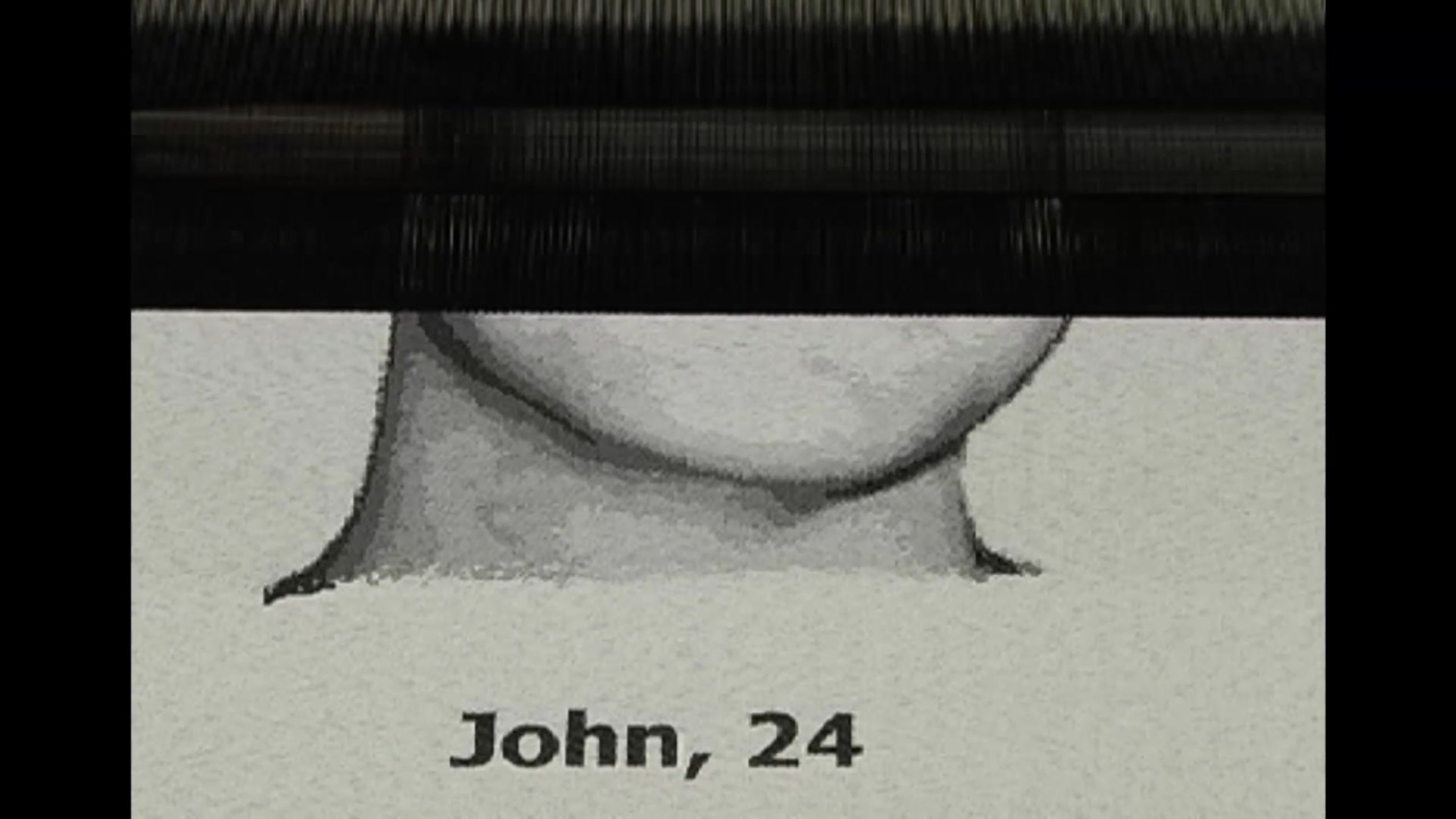
From Anonymity to Identity




Worn Worlds
This work calls on the materiality of cloth and borrows its name from Peter Stallybrass. The images were produced by using a micro lens, documenting all signs of the lived experience from all the clothing donated to the Lived Lives Archive. The camera seeks out the details: tears, stains, frayed edges, and unravelled stitches. It explores the materiality of cloth and humans.
Worn Worlds
Worn Worlds


Worn Worlds Neasa

Worn Worlds Caroline
Families
Families' Within the Emerging Art Work
Centre for Creative Arts and Media, Galway, '09
In Galway '09, 45 families were scheduled to view the emerging art works over five days, in two separate viewings.The first 4 days Individual Family Journeys and Conversations and on the last day Collective Families Journeys and Conversations, followed by a closing conversation on the last day.
Individual Lived Lives Families: Journeys and Conversations, Galway '09
The first viewing was an intensely private individual experience, with each family only engaging with the works that emerged from their own donations. At this every step was mediated by the artist, scientist and the research team. This process is rooted in intimate conversation between the artist, scientist and the families. A distinctive narrative emerged. Each engagement lasted approximately one hour: this action was repeated thirty-nine times. As the experience unfolded during the duration of the engagement, two processes/methods were woven together, those of conversations and journeys.
Collective Lived Lives Families: Journeys and Conversations, Galway,'09
The second part of this shared journey was the first occasion that the families encountered the other works and each other. On this occasion there was no mediation. The families arrived back at Centre for Creative Arts and Media on Saturday 29th June and after a brief welcome they were invited to view any of the works. They had access to all the works that emerged from the Lived Lives Archive. All knew that they were there due to the shared experience of losing a loved one to suicide. Conversation of shared lost emerged.
Lost Portrait Gallery
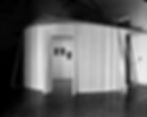



Archive Print Room




Archive Rooms




Family Discussions





Should We Go Public
Reclaiming




In May 2011, The Royal College of Physicians facilitated the installation of all the jacquard tapestries in their premises in Kildare Street,Dublin as part of a Lived Lives family meeting. At this the families were invited to approach the wall on which the tapestries were installed and to physically reclaim the portrait of their loved one.

Closing Conversation
Public Within
the Artworks
Lived Lives: College of Psychiatry In Ireland Inaugural Meeting
Croke Park, Dublin, November 2009
The first Irish engagement with a public audience was as a result of an invitation to give one of the keynote presentations at the first Annual Meeting of the newly formed College of Psychiatry of Ireland. It was agreed to exhibit the Lost Portraits gallery at the conference. The subsequent installation involved the designing, building and installation of a round room in the Hogan Stand in Croke Park, the entrance faced the hallowed playing field of Croke Park, traditionally a symbol of greatness and achievement in Irish culture. Having received permission from the family members at Galway'09 to bring these works into the public, symbolically the then President of Ireland, Mary McAleese was invited to be the first member of the Irish public to engage with the physical art works.
“Suicide in Ireland: A Conversation and Journey
through Loss with Science and Arts”
Royal College of Physicians Ireland, Kildare St, Dublin 2010
This event was co-produced with the Royal College of Physicians. The lecture was delivered on four occasions over a two day period. Through active conversations the audience was guided on a journey through the artworks which had been installed throughout the RCPI building. These were the Lost Portraits Gallery and Not A Statistic, both installed in the large Graves Hall with the third work, 21g (2003) installed in the smaller, more intimate Dun Library on the top floor. These became active sites for conversations. In excess of 500 people attended.
Conversation 21g Royal College of Physicians Ireland

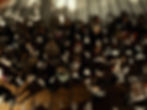


Conversations Royal College of Physicians Ireland




Journeys Royal College of Physicians Ireland
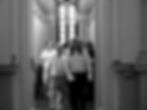



Lost Portraits Royal College of Physicians Ireland

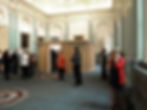
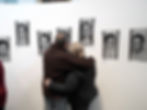

Feedback Royal College of Physicians Ireland

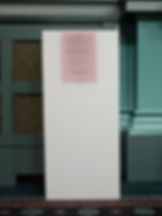


Lived Lives Lost
Regional Cultural Centre, Letterkenny, Co.Donegal, 2013
The month long exhibition drew the second largest audience attendance to any exhibition since the Centre opened in 2005. It was open four days a week for four weeks for members of the public - this included visits from over 100 school boys and girls aged 16-18, and their feedback. McGuinness was present for the duration to mediate the works to the various publics. Of note was overwhelmingly positive feedback, and no reports of any attendee being 'worse on the way out than on the way in'.
Following Lived Lives Lost in Letterkenny a reflective post-event was held in April 2014 and attended by policy makers, health officials, community leaders, scientist and artist to reflect on the event and the feedback obtained. The Suicide Prevention Implementation group held the view that the exhibition worked very well, 'had great impact,' and in particular engaged with youth audience in an engaged and responsible manner.
Since then ongoing dialogue and consultation between the research team and local suicide prevention policy makers has been continuing. This ongoing collaboration with Donegal stakeholders provides an opportunity to be an active participant in contributing to shaping local suicide prevention policy. The research team is also engaged with the National Strategy Group, which will also provide the opportunity to interact with national policy makers. Lived Lives is embedded in the County Donegal implementation plan for “Connecting for Life”; Ireland’s National Strategy to Reduce Suicide 2015-2020. Emerging from this two exhibition events are planned. The first was held at Fort Dunree, in the Inishowen peninsula in Co. Donegal Nov.'16 and the second in Gaoth Dobhair March 2018.
21g Letterkenny




Archive Rooms Letterkenny




Lost Portraits Letterkenny



Conversations Letterkenny




Lived Lives, Fort Dunree
October 7th – 15th 2016
The month long exhibition drew the second largest audience attendance to any exhibition since the Centre opened in 2005. It was Lived Lives Fort Dunree was the first phase of a three year process, which aims to make the aesthetic experience of Lived Lives available to and engage with communities in three locations across County Donegal. The exhibition at Fort Dunree was organised in partnership with Donegal County Council Cultural Services, HSE, Inishowen Development Partnership and Living Links as part of the ‘Connecting for Life Donegal Suicide Prevention Action Plan’. Over the course of 7 days pre-planned visits by many communities in Inishowen attended, including Transition Year students from Social Mhuire Buncrana, Colaiste Chineal Eoghain Buncrana and Carndonagh Community School.
Dunree Fort
Dunree Fort


APA Dunree Fort TY Students

Transition Year Teacher
Pavee
Perspective
With the support of the Wellcome Trust, and in partnership with Pavee Point Traveller & Roma Centre and following collaboration with Traveller Leaders and Youth, LIVED LIVES was presented at the national Traveller Resource Centre, Pavee Point in November 2015.The exhibition aimed to create awareness about the challenge of elevated suicide rates within the Travelling community. The exhibition also involved a series of mediated visits and discussions with: Travellers; the LIVED LIVES families; policy makers, medical and fine art students as documented below:
Pavee Perspective
Pavee Perspective


Opening Night

The Works

Conversation
About Pavee Point
Pavee Point is a government-funded non-governmental organisation based in Dublin, Ireland that was formed to improve the human rights of Irish Travellers and to bridge the economic and social inequalities between Travellers and settled people.


Lived Lives: From Tory Island to Swift's Asylum.
November 2017 - October 2018
Following the impacts of Lived Lives: A Pavee Perspective we wanted to continue addressing stigma about suicide and depression at the geographic, economic and psychological margins of society. Lived Lives was awarded a second Wellcome Trust Science and Society People Award in 2017 which allowed the project From Tory Island to Swift’s Asylum be realised and to journey over 11 months, reaching new marginalized communities.
From Tory Island to Swift’s Asylum had two distinct elements. The first element of the Lived Lives Project manifested in An Gailearai Gweedore angailearai.com, Comharchumann Oileán Thorai, Tory Island, (2017) oileanthorai.com, Regional Cultural Centre, Letterkenny (2018) regionalculturalcentre.com and in the Leitrim Sculpture Centre, Co Leitrim (2018) leitrimsculpturecentre.ie. Both of these counties border Northern Ireland. These mediated exhibitions/events have engaged and were relevant to local authorities, community groups including youth groups and health policy makers affected by suicide and social deprivation and by residual social, economic and political tensions in a post-conflict society, compounded by the uncertainties of Brexit.
The second element Lived Lives SPUH involved the Lived Lives artworks and mediated arts-science exhibition being installed within St. Patrick’s University Hospital (Dublin), Ireland's oldest psychiatric institution founded by Johnathan Swift in 1746, to introduce and evaluate this novel intervention within a mental institution. stpatricks.ie.
The entire proceedings, journeys through the works, reflective conversions and discussions were documented with still and moving image and are presented here as a visual journey, providing a pathway to extend the conversation beyond the immediate participants. Often in contemporary art the voice of the public and participants is not heard, instead we hear the voices of artists, educators, critics and curators. In Lived Lives the experience of the individual participants as they move through the works, physically touching and marking the art works is central to it process, and it has often been described as transformative. This transformative experience resides within the participants, and this process creates mechanisms for their voices to be heard.
Suicide prevention strategies continue to stress the importance of getting people to talk about their feelings and about suicide without any clear vision of how this can be achieved. Lived Lives provides a safe, non-judgmental platform for this new voice to enter the narrative about suicide amongst their peers and beyond. The entire proceedings, journeys through the works, reflective conversions and discussions were documented with still and moving image and are presented here as a visual journey, providing a pathway to extend the conversation beyond the immediate participants. All participants were informed in advance of attendance that all proceedings would be recorded and had the choice to not be filmed. Permission was obtained for documentation to be used for dissemination purposes. The video works and transcriptions of conversations included in this publication aim to acknowledge, release and amplify these often unheard voices.
Lived Lives: From Tory Island to Swift's Asylum
Epublication
"This EPUB utilizes a contemporary visual arts-science tactile and tangible approach towards engaging with and addressing deep aspects of suicide and suicide-loss amongst communities at increased risk, moving from awareness to knowledge and understanding. It has been created and constructed with tenderness, sensitivity and respect for lived lives lost to suicide in Ireland - for those lost and those bereaved, striking a universal chord in humanity, reaching out beyond stigma, and restoring identity."
From Tory Island to Swift's Asylum
From Tory Island to Swift's Asylum


Mediated journeys and Conversations through Lived Lives

TY Students, St Eunans College RCC 2018

TY Students Pobalscoil Ghaoth Dobhair RCC 2018
Epublication Links
Support Services
Find Supports & Services Near You:
www.yourmentalhealth.ie
Samaritans
For more information:
www.samaritans.org/how-we-can-help-you
or call 116 123
Pieta House
For more information:
www.pieta.ie or call 1800 247 247
TeenLine Ireland
For more information:
www.teenline.ie or call 1800 833 634


